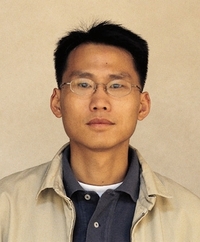
A team of researchers led by UC Riverside Professor of Chemical Engineering Wilfred Chen has constructed for the first time a synthetic cellulosome in yeast, which has the potential to improve the production of renewable fuel.
A team of University of California, Riverside (UCR) researchers, led by Wilfred Chen, Professor of Chemical Engineering, has for the first time, constructed a synthetic cellulosome in yeast. According to Chen, this synthetic cellulosome is much more ethanol-tolerant than the bacteria in which these structures are commonly found.
Cellulosomes are self-assembled structures found on the the exterior of certain bacteria that allow the organisms to efficiently break down cellulose. The artificial cellulosome developed at UCR is highly modular and can be engineered to display ten or more different cellulases, the composition of which can be tuned to optimize hydrolysis of any feedstock.
Chen’s team is focusing on the conversion of non-food related materials like cellulosic biomass and wood wastes for conversion to bioethanol. According to the Chen, this construction is important because it could enable a more efficient on-step “consolidated bioprocessing” by maximizing the catalytic efficiency of cellulosic hydrolysis with simultaneous fermentation. Ordinarily, these are separate steps. The consolidation signals more efficiency and less costs in the process.
The process is described in the paper “Functional Assembly of Minicellulosomes on the Saccharomyces cerevisiae Cell Surface for Cellulose Hydrolysis and Ethanol Production,” in the October 1, 2009, issue of the American Society of Microbiology’s journal Applied and Environmental Microbiology.

